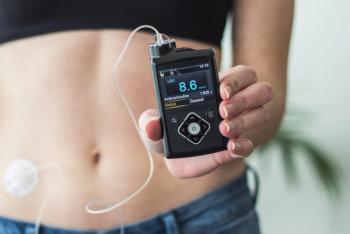
The Chronic Complications For Children With T1DM
Part of the risk of developing kidney involvement begins when type 1 diabetes mellitus (T1DM) sets in and establishes itself in the patient, with up to 65% of children experiencing acute kidney injury during T1DM onset, which can further predispose to the development of future chronic kidney disease.
Children with type 1 diabetes mellitus (T1DM) have an increased risk of developing kidney involvement both in the acute and chronic setting. As such, it behooves astute pediatricians and healthcare providers to closely monitor their patients with T1DM to enable an expeditious diagnosis, a timely management of potential acute kidney injury (AKI), as well as to help circumvent the long-term consequences of chronic kidney disease (CKD) in their patients.
A recent review in Pediatric Nephrology,1 assessed the current literature on the acute and chronic effects of T1DM on the kidneys and long-term kidney function in children.1 Part of the risk of developing kidney involvement begins when T1DM sets in and establishes itself in the patient, with up to 65% of children experiencing AKI during T1DM onset, which can further predispose to the development of future CKD.
In addition to the tubular damage that can already occur in the acute setting, patients with diabetic kidney disease (DKD) eventually may develop hypertension (HT) and microalbuminuria. The level of albuminuria has been shown to predict the progression of CKD stage 5, and it is associated with an increased risk of macrovascular disease. According to the authors, diabetic ketoacidosis (DKA) can be viewed as a microvascular complication of the diabetes characterized by the development of microalbuminuria/proteinuria or by the reduction of eGFR (estimated glomerular filtration rate) in patients with T1DM. When T1DM is complicated by DKA, acidosis could lead to further deterioration of tubular damage with a further negative effect on kidney perfusion.
Acute kidney injury and DKA appear to be interconnected, as the more severe the DKA, the higher the probability of developing AKI. As approximately one-fifth of patients with T1DM onset without DKA can develop AKI, the authors noted that it is paramount to closely control kidney function and focus on appropriate rehydration in these patients, particularly in the acute setting, which generally should begin before the initiation of insulin therapy. Here, the authors noted that serum chloride level is the most important risk factor for AKI in patients without DKA. Although both AKI and tubular damage are reversible, both have been associated with an increased risk of CKD. The risk of future CKD increases with the continuing course of T1DM in patients and can be related to a poor glycemic control and the subsequent development of DKD.
It is of paramount importance that pediatricians caring for patients with T1DM remain vigilant and not neglect the kidney health of their patients at any stage of their disease to help avoid the development of CKD and the possible progression towards renal failure.
The clinical management of DKA is fully described in the ISPAD (International Society for Pediatric and Adolescent Diabetes) 2018 guidelines. In the acute setting, fluid replacement is of critical importance to optimally manage patients and their kidney health. The authors said that a safe rehydration of the patient should be found, involving a “therapeutic compromise” between a too slow fluid replacement therapy and a too rapid replacement therapy. Pediatricians should also check for and aim to control the patient’s blood pressure (BP), glycemic levels as well as potential proteinuria to help lessen the risk of kidney damage. In the chronic setting where DKD has already been established, these parameters should also be monitored and controlled to help minimize the long-term impact of DKD. According to the authors, the three main targets of management here include obtaining the best glycemic control maintaining HbA1C levels at 7 percent or less, maintaining BP in the normal range, defined by systolic and diastolic blood pressure values < 90th percentile, and detecting microalbuminuria early on and achieving regression of microalbuminuria.
Screening for DKD should ideally begin at 11 years of age with 2 to 5 years diabetes duration, and annual follow-up controls are important to identify a rapid or slow progression of microalbuminuria, as well as cases of regression to normo-albuminuria. There are several risk factors that are related to the development of DKD and according to the authors, long-term glycemic control remains the most important factor for the development and severity of complications in patients with T1DM.
Urine albumin-creatinine ratio (Ua:CR) measured after AKI is a strong and potentially modifiable risk factor for more rapid loss of kidney function. The authors recommended that patients with AKI should be monitored through the evaluation of BP and Ua:CR 12 months after AKI, annual BP and Ua:CR for life, and serum creatinine if previous measurement was elevated or if proteinuria or a raised BP develops.
Following a quick diagnosis and initiation of patient care, as a preventative measure, pediatricians can appropriately inform the parents of patients regarding the long-term consequences of T1DM and advise them accordingly. Patients should be encouraged to undertake lifestyle modifications such as weight loss and weight control, dietary changes, and increased physical activity, all of which may ultimately help reduce the risk of AKI at T1DM onset as well as the development and progression of future CKD.
Ilya Petrou, MD | Author provided
Commentary from Amin J. Barakat, MD, FAAP
Renal involvement in children with T1DM has always been a concern. Epidemiological studies have shown an increase in the incidence of T1DM. More than 30% of patients with T1DM show progression to DKD, which is the leading cause of end-stage renal disease. DKD is a multifactorial disorder with genetic susceptibility and environmental components (lifestyle, obesity) being contributing risk factors. Many gene loci have been identified, contributing to our understanding of the pathogenesis of DKD. Since DKD starts early and may be silent, early diagnosis, close monitoring, and therapeutic interventions are crucial. Microalbuminuria (occurring in 2%-30%), and glomerular filtration rate (GFR) are the most used tools to assess the gravity of renal involvement.
I agree with the authors that management of DKD should focus on achieving an HbA1c of 7% or less and lifestyle modifications including weight loss, dietary changes, and increased physical activity. Treatment of (HT) is pivotal, as uncontrolled HT often accelerates the progression of CKD. Antiproteinuric medications such as ACE inhibitors and angiotensin receptor blockers (ARBs) are recommended for affected children with HT and microalbuminuria.
According to the American Diabetes Association (ADA),2 most people with T1DM will never have any kidney damage. Control of BP and glycemic levels will reduce the risk further. While albuminuria is detected in ~15% of adolescents, it resolves on its own in most cases. Even if it persists, kidney function in affected children is rarely compromised. For these reasons, medications are rarely prescribed for those under 18.
ADA recommends that urinary albumin (spot urinary albumin-to-creatinine ratio) and estimated GFR should be assessed at least yearly in patients with T1DM of ≥5 years duration. In patients with established DKD, these tests should be monitored 1–4 times per year, depending on the stage of the disease.
Pediatricians should make every effort to educate parents about the risk of DKD at the onset of T1DM, and subsequent CKD. Patients presenting with uncertain etiology of kidney disease, challenging contributing risk factors include management issues, and rapidly progressing CKD should be referred to a nephrologist.
References:
1. Rivetti G, Hursh BE, Miraglia del Giudice E, Marzuillo P. Acute and chronic kidney complications in children with type 1 diabetes mellitus. Pediatric Nephrology (2023)38:1449-1458. doi:10/1007/s00467-022-05689-w
2. Kidney disease. American Diabetes Association. Accessed May 30, 2023. https://diabetes.org/diabetes/chronic-kidney-disease
Newsletter
Pharmacy practice is always changing. Stay ahead of the curve with the Drug Topics newsletter and get the latest drug information, industry trends, and patient care tips.




































































































































